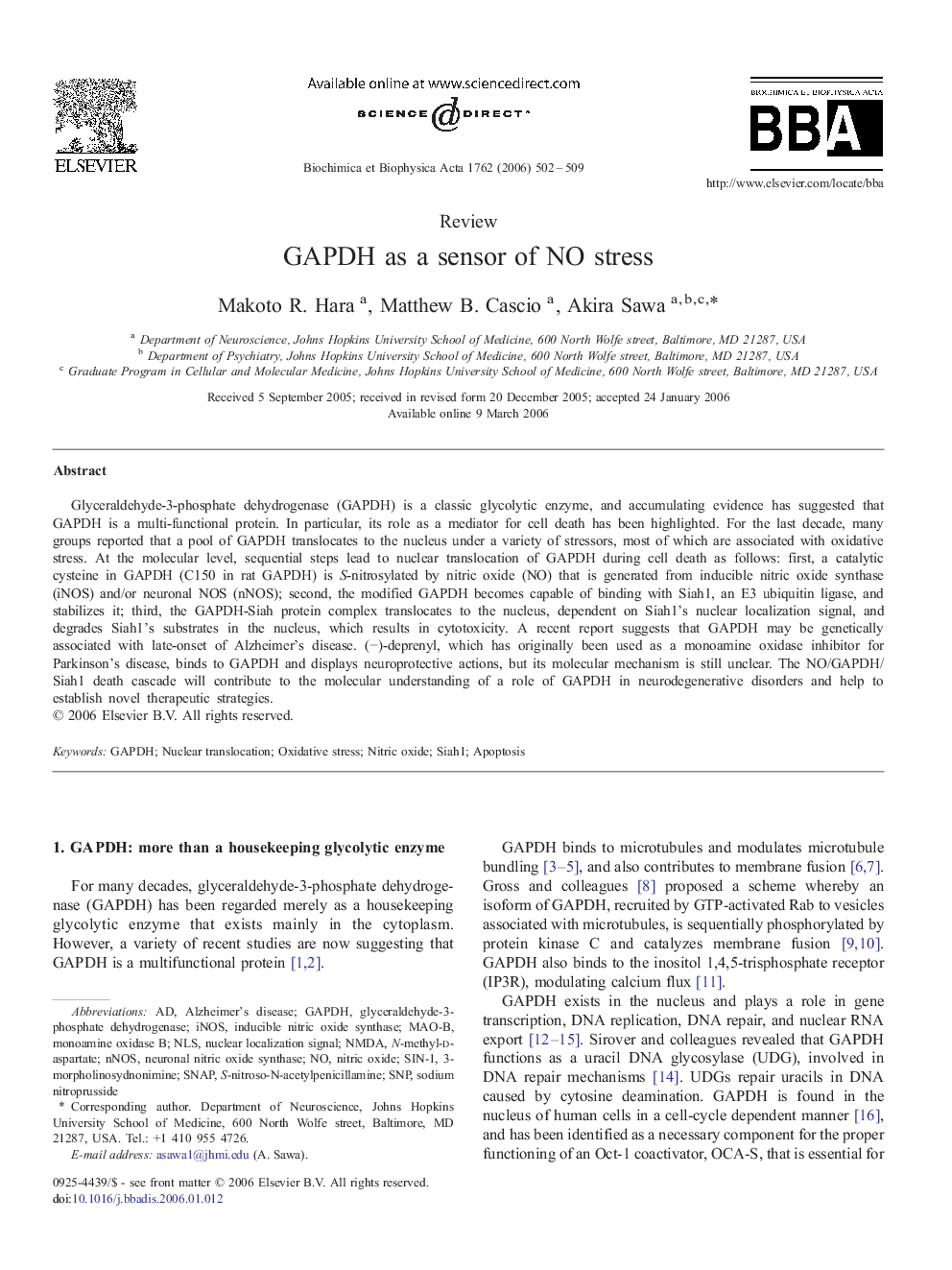| Article ID | Journal | Published Year | Pages | File Type |
|---|---|---|---|---|
| 1905957 | Biochimica et Biophysica Acta (BBA) - Molecular Basis of Disease | 2006 | 8 Pages |
Glyceraldehyde-3-phosphate dehydrogenase (GAPDH) is a classic glycolytic enzyme, and accumulating evidence has suggested that GAPDH is a multi-functional protein. In particular, its role as a mediator for cell death has been highlighted. For the last decade, many groups reported that a pool of GAPDH translocates to the nucleus under a variety of stressors, most of which are associated with oxidative stress. At the molecular level, sequential steps lead to nuclear translocation of GAPDH during cell death as follows: first, a catalytic cysteine in GAPDH (C150 in rat GAPDH) is S-nitrosylated by nitric oxide (NO) that is generated from inducible nitric oxide synthase (iNOS) and/or neuronal NOS (nNOS); second, the modified GAPDH becomes capable of binding with Siah1, an E3 ubiquitin ligase, and stabilizes it; third, the GAPDH-Siah protein complex translocates to the nucleus, dependent on Siah1’s nuclear localization signal, and degrades Siah1’s substrates in the nucleus, which results in cytotoxicity. A recent report suggests that GAPDH may be genetically associated with late-onset of Alzheimer's disease. (−)-deprenyl, which has originally been used as a monoamine oxidase inhibitor for Parkinson's disease, binds to GAPDH and displays neuroprotective actions, but its molecular mechanism is still unclear. The NO/GAPDH/Siah1 death cascade will contribute to the molecular understanding of a role of GAPDH in neurodegenerative disorders and help to establish novel therapeutic strategies.
